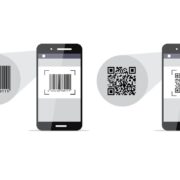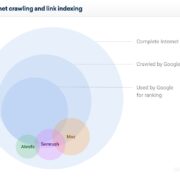The technology landscape in 2026 stands at a thrilling crossroads: innovation continues to reshape not just industries, but the daily lives of people across the globe. With record investments—projected to reach $5.6 trillion in 2025—and accelerated adoption of digital solutions, it’s a pivotal year for both consumers and businesses to understand which tech trends will define the next decade.
In this article, we explore the top five technology trends poised to drive profound change in 2026. We’ll break down what’s new, why each trend matters, practical examples you’ll encounter, and how you can leverage these trends—whether you’re a tech enthusiast, entrepreneur, or simply curious about the future. Read on to stay ahead, get practical insights, and discover opportunities shaped by today’s boldest innovations.
Table of Contents
ToggleTable of Contents
1. Digital Health & Wearable Technology: The Era of Personalized Medicine
What’s Driving the Digital Health Boom in 2026?
Healthcare is undergoing a digital transformation faster than ever before. Primary keywords: digital health, wearable technology, telehealth, AI in healthcare, personalized medicine. By 2026, technologies like artificial intelligence (AI), big data analytics, virtual care, and the Internet of Medical Things (IoMT) are revolutionizing how patients and physicians interact.
Why it matters:
-
The demand for accessible, affordable, and scalable healthcare is surging worldwide.
-
Wearables—such as smartwatches and health trackers—are moving beyond fitness, monitoring blood pressure, heart rate, sleep quality, and even blood glucose in real time.
-
Telehealth and virtual-first care are becoming standard, removing physical barriers and improving access, especially in rural and underserved areas.
-
AI-driven predictive analytics are improving diagnoses, accelerating drug development, and enabling personalized treatment plans in ways previously unimaginable.
Key Trends in Digital Health for 2026:
-
AI & Machine Learning in Medical Decision-Making: From diagnostic tools to treatment recommendations and workflow automation.
-
Telehealth and Remote Monitoring: Enabled by IoMT devices that transmit patient health data instantly and securely.
-
Nanomedicine and Smart Implants: Miniaturized devices and tailored implants for treating chronic diseases.
-
Data Interoperability: Secure sharing and integration of electronic health records for holistic, coordinated care.
-
Femtech Advances: Focused solutions addressing gaps in women’s health, from reproductive care to chronic condition management.
Stat: In 2026, global spending on healthcare wearables is forecasted to double compared to 2021, a testament to their increasing impact.
Practical Examples:
-
Smartwatches like Apple Watch, Fitbit, and emerging medical-grade devices are now approved for EKG monitoring, fall detection, and more.
-
AI chatbots help patients schedule appointments, get medical advice, and monitor chronic conditions from home.
-
Digital twins of patients simulate health outcomes, optimize treatments, and test medication reactions virtually.
2. Edge Computing & Distributed Intelligence: Power Where It’s Needed Most
Edge Computing Redefines Data Processing in 2026
With the explosion of connected devices and sensors—the Internet of Things (IoT), smart factories, autonomous vehicles—classic cloud computing is being supplemented by edge computing. Key secondary keywords: edge intelligence, real-time data, decentralized infrastructure, IoT analytics.
What is Edge Computing?
It’s the decentralization of data processing, shifting computation and analysis away from centralized data centers to the “edge”—near the source of data generation (such as factories, vehicles, or wearables).
Why it matters in 2026:
-
Real-time applications like autonomous cars, AR/VR, and smart manufacturing require instant decisions—milliseconds matter.
-
The volume of new data is exploding. By 2026, global data created annually is predicted to surpass 163 zettabytes!
-
Edge computing ensures data is processed locally and securely, lowering latency and reducing bandwidth demands on the cloud.
Leading Edge Trends:
-
Industrial IoT: Smart sensors in manufacturing plants enable predictive maintenance, real-time analytics, and remote control.
-
5G Connectivity: Powers high-speed, low-latency connections critical for edge devices.
-
AI at the Edge: Algorithms run directly on edge devices, enabling fast, offline processing.
Practical Example:
-
Connected vehicles process sensor data on-board for collision avoidance, rather than sending it to the cloud and waiting for a response.
-
Retail stores install edge cameras for real-time inventory tracking and customer analytics, delivering faster service and enhanced personalization.
3. Supply Chain Digitization & Optimization: Resilience in a Connected World
How Tech Is Redefining Supply Chains
The pandemic highlighted a critical need to digitize, optimize, and strengthen supply chains. In 2026, advanced tech is the backbone of resilient logistics and manufacturing. Secondary keywords include: supply chain automation, blockchain supply chain, AI logistics, digital twins in supply chain.
Why this trend is critical:
-
Global disruptions (pandemics, climate events, conflicts) test supply chain stability.
-
Companies are transitioning from cost-centric back-office functions to viewing supply chains as strategic value drivers.
-
Real-time digital tools offer instant visibility across inventories, deliveries, and suppliers, reducing risks and optimizing operations.capgemini
Core Supply Chain Tech Trends:
-
Predictive Analytics & AI: Identify inefficiencies, forecast demand, and optimize inventory.
-
Blockchain: Enhances transparency, security, and traceability across distributed suppliers.
-
Robots & Drones: Automate warehouse management, last-mile delivery, and inventory audits.
-
Digital Twins: Virtual models simulate supply chain operations to test new strategies and optimize processes.
Practical Examples:
-
Major retailers use AI to predict seasonal demand and automate orders, reducing out-of-stock situations.
-
Shipping companies deploy drones for inventory checks and last-mile package delivery, improving speed and safety.
-
Food manufacturers use blockchain for tracking produce “from farm to fork,” ensuring freshness and transparency for consumers.
4. Robotics & Automation Revolution: The Rise of Smarter, Collaborative Machines
Robotics and Automation in a Human-Centric Era
Automation is leaping forward in 2025, with smarter robots, AI-driven machines, and collaborative robots (cobots) playing a bigger role than ever across industries—from manufacturing to healthcare to logistics.aiut+2
Why robotics and automation matter now:
-
Robotics cuts operational costs, improves consistency, and boosts round-the-clock productivity.
-
Automation is now shaping not just production lines, but entire business models—think autonomous retail, robotics in healthcare, and intelligent process automation in finance.
-
Human-cobot collaboration is on the rise: robots work alongside people, not just in isolation, supporting workplace safety and flexibility.
Major 2026 Robotics Trends:
-
AI-Powered Robots: Self-learning, adaptive robots for warehouses, hospitals, and even retail.
-
Mobile Manipulators: Robots that move and perform complex tasks in unpredictable environments.
-
Digital Twins: Simulate and optimize manufacturing processes in virtual reality before changes hit the floor.
-
Humanoids and Embodied AI: First-generation humanoid robots demonstrate intuitive navigation and collaboration with humans, hinting at a broader rollout soon.
Practical Examples:
-
Tesla’s Optimus and similar humanoids automate complex tasks in factories, reduce physical strain, and handle hazardous materials.
-
Smart hospitals deploy service robots for medication delivery, lab sample transport, and even patient companionship.
-
Software bots automate repetitive office tasks, freeing teams for more creative work.
5. MLOps & Industrialized AI: Scaling the Power of Machine Learning
From Experimentation to Enterprise AI-First Mindset
Artificial intelligence and machine learning are no longer experimental—they’re industrialized, integral to business strategy, and powering everything from customer support to autonomous machines in 2025. Secondary/LSI keywords: AI engineering, MLOps best practices, enterprise AI, AI automation.
What is MLOps?
MLOps (Machine Learning Operations) blends ML systems development with IT operations, creating efficient, agile, and sustainable frameworks to deploy AI at scale.
Why it’s a game-changer:
-
MLOps brings speed, reliability, and compliance to the rollout of AI models across organizations.
-
AI is now embedded across product lifecycles: from concept to deployment to maintenance.
-
Companies practicing MLOps can rapidly respond to market changes, scale innovations, and ensure data security and governance.mckinsey+1
Key Areas for 2026:
-
Automated ML Pipelines: End-to-end infrastructure for model development, training, and monitoring.
-
AI-Driven Productivity: Businesses leverage AI for process optimization, predictive maintenance, and intelligent customer support.
-
Hybrid & Edge AI: Merging cloud and edge for versatile, on-demand intelligence.
-
Responsible & Ethical AI: Governance frameworks ensure that AI systems are fair, transparent, and aligned with enterprise values.
Practical Example:
-
A global bank uses MLOps tools to automate credit risk analysis, enabling real-time adjustments during market volatility.
-
Retailers implement recommendation engines that automatically retrain on new purchasing data.
LSI/Related Keywords:
AI workflow automation, continuous integration ML, responsible AI, automated machine learning pipelines, data drift detection.
1. What is the most impactful tech trend to watch in 2026?
AI-powered automation and the rise of personalized digital experiences across industries—healthcare, finance, and retail—are widely considered the most impactful trends, as they drive innovation at scale and offer practical benefits to both businesses and everyday users.
2. How will edge computing change everyday life?
Edge computing enables real-time applications like autonomous vehicles, smart cities, and AR experiences by processing data close to its source, reducing latency, and improving privacy.
3. What risks come with more automation and AI?
The most common concerns include workforce disruption, potential bias in algorithms, increased cybersecurity threats, and the need for transparent, ethical AI practices.
4. How can small businesses benefit from these trends?
Small businesses can leverage cloud-based AI, affordable robotics, and plug-and-play automation to boost productivity, improve customer service, and gain actionable insights—all without the need for massive upfront investment.
5. What is MLOps and why is it important?
MLOps is the practice of managing the entire machine learning lifecycle efficiently. It ensures that AI models are reliable, scalable, and secure—critical for enterprise-grade innovation.
6. Will wearables replace traditional healthcare?
Wearables won’t replace traditional healthcare but will significantly supplement it by enabling continuous monitoring, early detection, and better preventive care—especially for chronic and lifestyle-related conditions.
7. How long before humanoid robots become mainstream?
While 2026 will see initial deployment in select manufacturing and service environments, widespread adoption in public spaces and homes is likely several years away, pending advances in safety, affordability, and social acceptance
Conclusion and Next Steps: Embracing the Tech Wave of 2026
As we move deeper into 2025, embracing these five tech trends is no longer optional—it’s critical for staying relevant, competitive, and ready for what’s next. From digital health to intelligent automation, these innovations have the power to reshape businesses, create new jobs, and improve quality of life for all.
Ready to future-proof your skills or your business? Start by:
-
Upskilling in AI, data analytics, and digital transformation.
-
Exploring wearables and edge solutions that bring fast, actionable data insights.
-
Auditing your supply chain for automation and transparency opportunities.
-
Partnering with solution providers and tech consultants versed in these core trends.
Stay informed, stay adaptive, and take an active role in shaping the technology-powered world of tomorrow!






















Comments